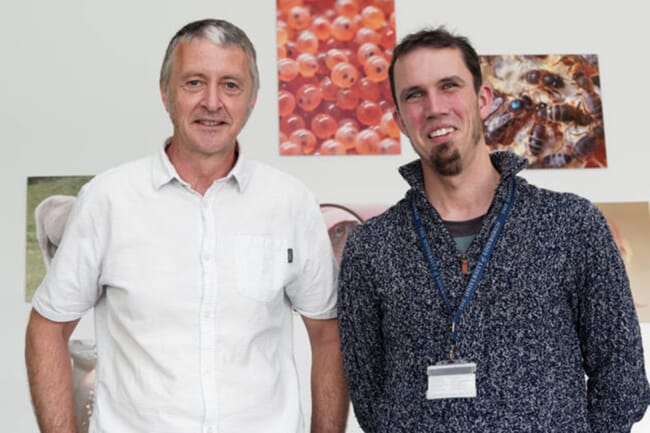
Along with their collaborators from Nofima, Deakin University and the University of Edinburgh, the pair have created a useful guide for assessing the use of gene editing © Georg Mathisen, Nofima
A new project will be exploring whether gene editing can be used to protect Atlantic salmon from sea lice. A collaboration between researchers from Nofima, Deakin University and the University of Edinburgh, the project partners aim to use genomic studies of Pacific salmon, which are naturally resistant to lice, to inform their gene editing work.
Coho and pink salmon combat sea lice naturally in a way that Atlantic salmon are unable to manage.
“Our genomic research is helping us to understand which genes are involved in providing resistance against sea lice in the Pacific salmon species, and the next step in our project is to test the function of these genes in Atlantic salmon using gene editing. Early next year, we will be ready to introduce gene edited Atlantic salmon to sea lice in a closed biosecure facility. We want to see whether small and precise changes disrupting the function of these genes can cause the immune cells in Atlantic salmon to encapsulate the lice and kill them, like occurs in coho, or to prevent attachment like occurs in pink salmon,” Nick Robinson, a senior scientist at Nofima, explained in a press release.
He emphasises that there is no question of the project editing genes in fish that are going to be grown in the ocean, sold and eaten. The scientists will test which genes can affect whether salmon are able to repel lice infestation. They will look at what happens exactly where the lice attach themselves to the salmon and the importance of genes in relation to stopping the lice.
“The benefits could be large in the future if it is possible to use the knowledge gained from the project to produce a resistant salmon. Lice create wounds that become infected. If we can help the fish to become resistant to lice, it has benefits for fish welfare. By potentially changing the whole epidemiology of lice infection on farms we could also relieve the lice pressure on wild salmon,” he said.
An ethical dilemma
In the project, the scientists will edit genes that their research suggests will keep salmon healthy and the lice away. However, is gene editing safe to use on salmon that are to be farmed and sold?
”In each instance, there needs to be a thorough evaluation of how the edit might affect the welfare and health of the fish, the aquatic ecosystem and society. This should involve consumers and other interest groups in the decision-making process. The benefits should be weighed in relation to any potential harms,” Robinson emphasised.
Therefore, the project partners have written A guide to assess the use of gene editing in aquaculture, which helps to assess the risks of gene editing. They also note that gene editing should not replace regular breeding, whereby animals with the best genetic variants for particular traits are selected.




